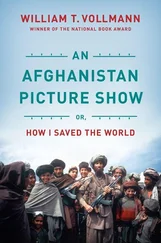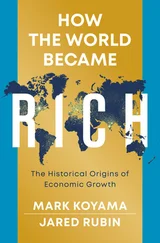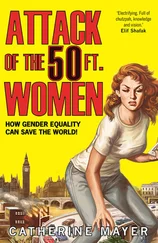Vittorio Delucchi gave me an introduction to the research group of Robert van den Bosch at the University of California in Berkeley, which at the time was the mecca for entomologists in the field of biological pest control. In 1979, whilst at the International Institute for Tropical Agriculture (IITA) in Ibadan, Nigeria, I had an opportunity to put into practice my knowledge of the biological control of the mealybug—a pest that devastated the cassava crops. 1
I remained in Africa for 27 years working in the field of biological pest control. This experience and the knowledge I gained made me realize that fundamental changes were needed to agriculture—in fact to the entire global food system.
It is an ambitious aim: a world free from hunger and misery, where everyone enjoys the same right to live in freedom with one another and in harmony with nature. A world where the boundaries of Planet Earth are respected and violence and war are outlawed. Where the needs of future generations are at the very top of the political agenda; natural resources are regenerated and preserved on their behalf. A world where energy supplies are based 100% on renewable energy sources.
In this vision, the food system plays a crucial role.
1. Surfeit of hunger
One in nine people go to bed hungry. According to a report on food security published in 2015 by the FAO, the UN Food and Agricultural Organisation, 795 million people—just under 11% of the global population—are malnourished. Although the figure has fallen by 216 billion since the beginning of the 1990s,2 it fails by some margin—more than half a billion—to achieve the goal set by the World Food Summit in 1996 to halve the absolute number of people without enough food between 1990 and 2015.
One in seven children under five years of age is underweight. Malnutrition contributes to the deaths of 3.1 million children under five each year—that is more than 45% of all deaths in this age group.3 Africa, south of the Sahara, is the worst-affected region with 23% of the population currently malnourished; in the Caribbean it is slightly under 20%.4
Some two billion people are deficient in vitamins and essential minerals such as iodine and iron, even though they consume enough carbohydrates and protein. This is partly a result of reductions in food diversity; monoculture systems are used to grow essential foodstuffs, which means that certain highly nutritional plants are absent from local diets. Similarly, those living in rich countries are often malnourished because they eat high-calorie processed foods that are low in micronutrients.
Hunger is the greatest risk to global health. However, the reverse is also a problem: a total of 1.4 billion adults in the world are overweight and of these 500 million are obese.5 Excess weight is a major cause of diabetes, high blood pressure, strokes and many cancers. In 1980, obesity was already affecting one-quarter of all adults and by 2008, that figure had risen to more than one-third; increasingly it is also affecting developing countries and overall, about 50% of the global population eats too little, too much or the wrong type of food.6
For many countries in the global South, hunger is a major obstacle to development. It is also a difficult one to overcome: If people have too little to eat, their productivity remains low and hungry children often miss school. It is also costly to treat the associated diseases. A study conducted in several African countries estimated that the cost of hunger in these countries is between 2% and 16% of Gross National Product.7
A food system that puts both too much and too little healthy food on the table cannot be a model for the future. The following sections look in more detail at the various issues and demonstrate why the aim of the World Food Summit—to eradicate hunger—has so far been impossible to achieve.
Waste
At present, farmers produce enough food to feed more than 14 billion people; that is twice current global requirements. Unfortunately, not all food ends up being eaten by consumers. According to a study published in early 2003 by the British Institution of Mechanical Engineers, 30–50% of food intended for human consumption is lost.8 The main reason for this in developing countries is a lack of storage, processing and transport facilities.
The situation is different in industrialised countries. For example, in Switzerland domestic households account for 45% of the loss.9 Special offers tempt shoppers to buy more than they can consume. In addition, expiry dates are calculated in such a way that perfectly good food is often discarded.
Globally, about one-third of all food produced is currently not consumed. This causes not only a serious economic loss (US$ 940 billion per year) but also 8% of all greenhouse gas emissions. A study by Porter, Reay, Higgins and Bomberg from the University of Edinburgh found that the loss and waste of food accounted for 2.2 gigatonnes of CO 2equivalents each year, which is 323 kg CO 2per person and three times higher than 50 years ago.
Champions 12.3, a coalition of more than 36 business and government representatives as well as those from civil society, published a report during the process leading up to the agreement on the Sustainable Development Goals (SDGs) in autumn 2015. It provided a progress report on the fight against food waste and loss. Although the international community had made considerable efforts to achieve SDG Target 12.3, the report concluded that they were not enough to rectify current deficiencies in the supply chain, including production, delivery and the end consumer.
The report highlighted three particular benefits of eliminating food loss and waste: better food security, lower costs throughout the entire supply chain and finally better protection for resources and the climate. The report called for stakeholders to agree on concrete reduction targets without delay. Progress must be monitored regularly and there must be no ifs and buts. There are already some examples of good practice: Italy and France have both passed legislation to reduce food waste. Instead of dumping edible foodstuffs, supermarkets are now allowed to donate them. Similarly, the United States has announced plans to halve food waste by 2030.
The concern remains, however, that action on Target 12.3 will be limited to a few countries and will only involve larger companies. In addition, the mechanisms for monitoring progress are still inadequate in many areas. The report identified a lack of professional systems and methods for the systematic recording of data that is capable of identifying problem areas. To sum up: if we are to achieve SDG Target 12.3 by 2030, each and every country, town, company and in particular each and every consumer on Planet Earth must show greater commitment to efforts to fight food waste and loss.10
Too much meat
Another form of food waste is the high level of meat consumption. To produce one calorie of food from livestock farming requires between two and seven times as much feed as that needed to produce plant-based calories. Global meat consumption has increased fourfold in the last 50 years11 and the average global consumption per head per year is now 32 kg12. In Switzerland it is 51 kg,13 in Germany 60 kg14 and in France 86 kg15. Although meat consumption has stagnated and in some cases even declined slightly in industrialised countries, it is rising in emerging nations, sometimes very rapidly.
Meat is increasingly produced on an industrial scale in intensive livestock units. This type of farming requires a much greater use of antibiotics. Livestock farming now accounts for 70% of the global use of antibiotics.16 Excessive use of antibiotics encourages the development of resistance and it is estimated that some 25,000 people die each year in Europe from infections caused by pathogens resistant to antibiotics.17
Читать дальше












